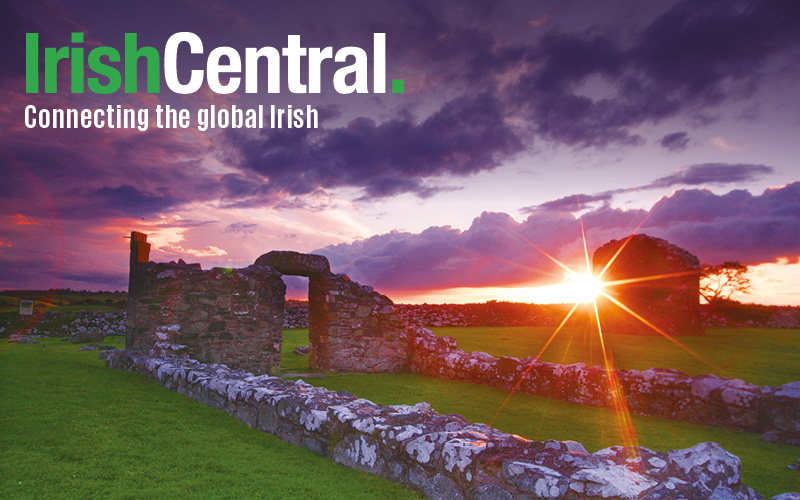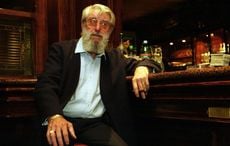What kind of country would the 1916 Easter Rising revolutionaries have wanted to see and what would they have thought about its eventual course?
It’s a fascinating thought and the subject of Tim Pat Coogan’s latest grand work “1916 the Morning After” available on Amazon or in good bookstores.
Coogan is that rare bird, a historian who explains in plain English the question he is contemplating. This book is an excellent primer for anyone commencing an interest in Ireland in the 20th century.
He is Ireland's outstanding popular historian as a result and his biographies of Michael Collins and Éamon de Valera have guided the general view of those two men ever since.
This book is perfect for the non-historians among us, a clearly defined narrative, breaking Irish history down into comprehensible periods. It should grace many an Irish American library.
First there is the Rising, then the inexplicable Irish Civil War which, to this day, defies explanation. Then there is the what if? What kind of Ireland would we have and indeed what kind of diaspora if Collins, not de Valera had survived.
There are some wonderful anecdotes in this section about how de Valera tortured the English language to come up with a reason for launching the civil war after losing a free and fair vote. It was the stain that still envelops Irish politics as the civil war parties – Fine Gael and Fianna Fail in their modern guise – continue to form the permanent government coalitions against each other.
The feud was followed by the hungry years, when de Valera took over as leader and tried to build an Ireland based on protectionism and defeating the rump of the IRA often by employing a British executioner to kill former colleagues.
De Valera was a man whose blood ran cold unless it was the topic of his beloved church. His close linkage of the Irish constitution to the power of the church, which was omnipotent in the middle century years, was evident to all. The Irish constitution has never recovered and generates referendums every few years in a desperate attempt to modernize. Put beside the American model it is a very pale shadow.
Coogan excels in this part with anecdotal tales of bishop and state in cohort together and the hysteria, especially around women’s sexuality.
Some of the church edicts he quotes, such as the dangers of attending dances and putting oneself in harm's way by meeting certain kinds of women who represent evil, would not have been out of place in the Salem witch trials.
This extract could easily come from a misogynistic ISIS tract: “The occasion of sin and of sin itself are the attendants at night dances in particular. to say nothing of the evil of drink. Imported dances of evil kind (Hello Buddy Holly) the surrounding of the dance halls withdrawal from the hall for periods (I presume going outside for a slap and tickle) and the dark ways home have been the destruction of virtue in every part of Ireland.”
The bishop’s obsession with female sexuality in particular is especially focused on by Coogan. It is hardly what the men of the Easter 1916 Proclamation, with its opening line of Irishmen and Irishwomen, had in mind.
The 1950s gave way to the 1960s and at last the air began to freshen and Ireland began to look outward. Emigration, the usual way of exporting a problem, slowed and modern industry began to trickle in. It was the precursor to Apple’s, Coca-Cola's and Google's Irish facilities of today.
He cites the visit of President Kennedy, which was a huge boost to Irish confidence, as well as the advent of television as the beginning of the country no longer just talking to itself.
The passing of de Valera and the coming of his successor, the technocrat Seán Lemass, who wanted to look outward and remove all tariffs, that sparked a golden age not just in the economy but a liberalizing of the spirit of the nation. It was the 1960s after all.
Coogan then moves on to the next dreadful epoch, the Northern troubles, which occupied the country from about 1968 as the time when partition came home to roost.
The long agony lasted over a quarter of a century before a viable peace process, much encouraged by American participation, took place.
Coogan is on well-covered ground here, but the missed opportunities, the failure to address the dreadful gerrymandering and repression of Catholics reminded me in some way of Lincoln's predecessors who failed to deal with slavery before the issue boiled over. If only a moderate Unionist or a far-seeing British government had seen the fundamental inequity and tried to do something about it. Instead, they discovered a risen people can be dangerous indeed.
Coogan himself played no small part in many of these negotiations and was a key listening post in Dublin, warning of the hunger strikes – and the dirty protest, too – before anyone discussed them.
Finally he moves on to the present day which makes sad reading. The corruption in the church and big business which brought Ireland to its knees has forced massive emigration again.
He lays out the clerical scandals fearlessly, arguing that the supreme power the church enjoyed made them feel invulnerable even with the pedophile scandals where they hid behind obfuscating Vatican edicts of Canon Law.
He spares no one in the book but names heroic priests too such as the Dublin Archbishop Diarmuid Martin who has done his best to cleanse the institution.
Then there is the banking scandal, the Celtic tiger bust, and the continuing inquiry into how much greed was enough. The answer? It never was enough.
So looking back what would the men of 1916 make of the Ireland they created? I suspect Coogan would say they would be profoundly disappointed in so so many ways
The bright spot Coogan talks about is the GAA, the amateur sporting body thriving in every town and village in Ireland north and south.
That great sense of cooperation of working together is still there in the Irish mind. Let’s hope we see it in the generations ahead.
In the meantime, read Coogan’s book. It catches the moment in the shadow of 1916 and the 100th anniversary.




Comments